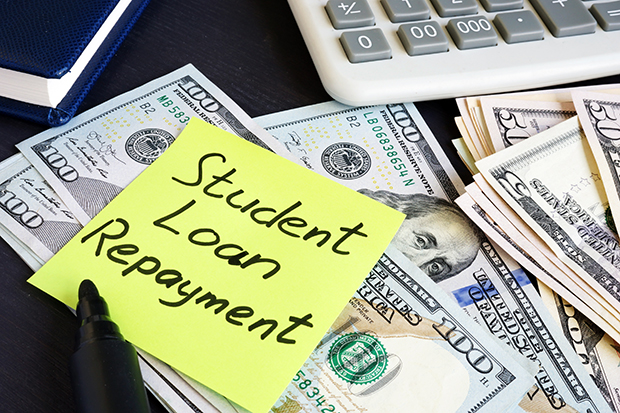More than 804,000 federal student loan borrowers could see a zero balance in their accounts by the end of the year. On June 30, the Supreme Court rejected the White House’s student loan forgiveness program that would have canceled about $430 billion in debt, with an estimated 26 million people who would have all their remaining student loan debt canceled.
Now the U.S. Department of Education (USDE) plans to apply one-time account adjustments by the end of 2023 to all income-driven repayment (IDR) plan borrowers who’ve reached enough payments for forgiveness. All other borrowers will receive at least three additional years of credit toward IDR loan forgiveness in 2024. However, the New Civil Liberties Alliance (NCLA), on behalf of the Cato Institute and the Mackinac Center for Public Policy, filed a lawsuit Aug. 4 in the U.S. District Court for the Eastern District of Michigan to stop the implementation of this plan. NCLA argues that the USDE violated its authority and that the Constitution grants Congress “near-exclusive authority to cancel debt owed to the Treasury.” Additionally, the department, through the IDR forgiveness, is “crediting non-payments during periods of forbearance as monthly payments,” NCLA said in a press release.
In the meantime, the USDE said it will notify groups of loan forgiveness recipients by email about every two months. The first group of recipients was announced on July 14, so borrowers can expect the next announcement by mid-September.
The account adjustments apply to borrowers who are on an IDR plan or were on one in the past; in the Public Service Loan Forgiveness (PSLF) program; or not on an IDR plan but are interested and have direct or Federal Family Education Loan (FFEL) program loans held by the USDE.
More than 4.4 million borrowers have been repaying their loans for at least 20 years, and 2.3 million of these borrowers have never defaulted or been delinquent on their loans, according to USDE data from April 2022.
Generally, borrowers with undergraduate loans will receive loan forgiveness if they’ve made at least 240 monthly student loan payments. Those with graduate loans will reach forgiveness if they’ve made at least 300 payments. Borrowers can log in to their Federal Student Aid (FSA) account at StudentAid.gov to see how long they’ve been in repayment.
Under the Higher Education Act and the department’s regulations, a borrower is eligible for forgiveness after making 240 or 300 monthly payments—the equivalent of 20 or 25 years on an IDR plan or the standard repayment plan, with the number of required payments varying based upon when a borrower first took out the loans, the type of loans they borrowed, and the IDR payment plan in which the borrower is enrolled.
“Inaccurate payment counts have resulted in borrowers losing hard-earned progress toward loan forgiveness. This action also addresses concerns about practices by loan servicers that put borrowers into forbearance in violation of department rules. The department previously began discharging loans for borrowers who reached forgiveness for Public Service Loan Forgiveness (PSLF) through these changes,” the announcement said.
Over the last five years, approximately 83% of veterinary students graduated with some level of debt incurred during their time at veterinary college, according to data from the 2023 AVMA Report on the Economic State of the Veterinary Profession. During this time, the annual graduating class size for the U.S. veterinary colleges, plus two Caribbean veterinary colleges, was between approximately 3,500 to 4,000 students. Taken together, these figures suggest that there are over 15,000 veterinarians who graduated in the past five years who likely carry some educational debt. The total number is unknown, though certainly higher, once accounting for veterinary graduates from before 2018 who also hold debt.
Paul S. Garrard, founder and president of PGPresents, LLC, an independent student loan consultant company, said a one-time IDR adjustment may be of particular interest to veterinarians using income plans in accelerating when they may receive forgiveness on their federal loans, either through PSLF—for those graduates working full-time in the nonprofit sector, such as a shelter or humane society—or for those working in the private sector through term forgiveness, simply meaning there is still a balance remaining at the end of the term.
“This is why more than a few veterinarians using income-driven repayment plans have faced—or are currently facing—the challenge of whether to simply make minimum payments or make additional payments on their loans, targeting those payments against their highest rate loans,” Garrard said.
He suggested that any veterinarian using an income plan should at least consider the new repayment plan Saving on a Valuable Education (SAVE), because the government will cover the entire difference between the monthly interest and the calculated minimum payment when the latter is lower than the former, meaning the borrower’s balance will not grow. The SAVE plan will eventually replace the existing Revised Pay as You Earn (REPAYE) plan. Borrowers on the REPAYE plan will automatically receive the benefits of the new SAVE plan.
Credit: Source link




